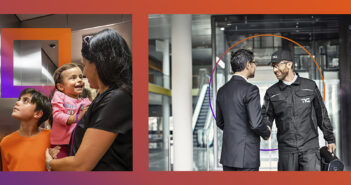The relationships we have with the buildings we occupy are set to change forever.
As the dramatic increase in connectivity of the Internet of Things (IoT) continues, the amount of data available to us is significant, driving the evolution of smart buildings with pace – progressively more so over the last few years.
Not only is fast, secure and reliable infrastructure critical when designing and building hard bricks-and-mortar, the ‘soft’ layer of platforms, seamless integration and engaging applications is equally fundamental to the end user experience & success of the workplace. The need for buildings to transform digitally is now becoming a critical factor in providing vital cost savings, effective space utilisation, energy efficiency, sustainability, with the aim of increasing occupier satisfaction.
Everything is now pointing towards the need to deliver action from data, that is increasingly available to occupiers and owners. However, the challenges building owners and managers face is understanding how to collect that data and what to do with it. And with so many disparate, self-limiting point solutions, devices and systems hitting the market, the wider challenge for them to solve is how to successfully and effectively piece those together.
The good news, there is a step change happening that is highlighting the need for a collaborative customer and supply chain relationship, enabling the delivery of a holistic solution for the connected employee, office and building – an eco-system of suppliers that create the connection between people and their environments seamlessly whilst evolving a single source of data intelligence and enabling real-time interaction, is at the very heart of a truly smart building.
Through these connections we can descriptively and predictively understand trends increasing our data intelligence of the building & the behavioural patterns of people within it. This allows us to improve user experience leading to increased employee productivity and drive key business real-estate decisions whether occupancy & utilisation related or energy efficiencies, or a combination.
In order for buildings to be truly smart, the connections between the building, assets, space, usage and the people within it are key. Creating convenience, personalisation, ease of use and practical benefits of engagement are at the foundation of a user centric connected strategy, that will result in valuable data for the building owners and occupiers in creating effective optimised spaces to work within.
A smart building is an essential part of ensuring you have a productive workforce and an optimised real-estate footprint.
RedstoneConnect Plc is a sponsor of MIPIM PropTech 2017



